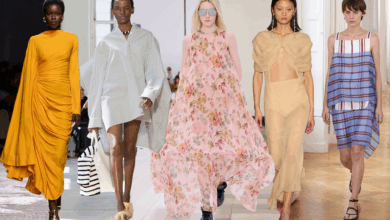How Synaworld Hoodie Reflects Urban Trends

Metropolitan design, or streetwear, is something other than a style; a social development mirrors the way of life, perspectives, and upsides of individuals living in metropolitan regions. From New York to Tokyo, from London to Paris, the garments individuals wear on the roads have developed into a characterizing element of metropolitan personality. The connection among dress and metropolitan patterns is advantageous, with each impacting and driving the other. This syna world investigates how attire reflects metropolitan patterns, why it makes a difference, and the manners by which it has formed worldwide design.
Clothing is a fundamental impression of metropolitan patterns, filling in as a visual portrayal of the way of life, legislative issues, and social developments that characterize city life. From its foundations in subcultures like hip-jump and skating to its globalized, profoundly persuasive presence today, metropolitan style is a strong power. Whether through private articulation, political explanations, or melodic impacts, the connection among dress and metropolitan patterns will keep on molding the universe of design for quite a long time into the future.
Role of Streetwear in Urban Culture
Streetwear plays a crucial role in capturing the rhythm of city life because it is an important part of metropolitan design. It is deeply entwined with skateboarding, games, spray painting, hip-bounce, and other subcultures. Strong, expressive, and frequently defiant characteristics are central to streetwear. By combining high design and a road feel, brands like Incomparable, Grayish, Stüssy, and A Washing Chimp have become inseparable from road culture.
Metropolitan design also adds a touch of legitimacy by frequently disregarding traditional design guidelines. It blossoms with originality and disregard for consistency, resulting in a diverse assortment of larger-than-average hoodies, realistic tees, troubled pants, shoes, covers with frills and gold chains, and so on. Despite being rooted in distinct subcultures, these elements have transcended into mainstream fashion, demonstrating the close connection between urban patterns and clothing.
Statements Through Fashion
The capacity of syna clothing to offer social and political expressions is perhaps one of the most striking ways in which it reflects metropolitan patterns. Many times, the socio-political world is immediately reflected in metropolitan design. For instance, hip-bounce culture was developing in the minimized networks of New York City in the 1980s. The central cee brand’s look of loose jeans, larger-than-average shirts, and prominent embellishments was an immediate response to the financial conflicts of the time. They addressed a need for protection against the polished, businesslike style that was being promoted to the wealthy.
Therefore, clothing is more than just a reflection of urban patterns; It is a means by which individuals and groups can express their qualities, disappointments, and objectives. Street fashion often reflects aggregate state of mind of a city, whether it’s bliss, outrage, insubordination, or pride.
Influence of Music on Urban Fashion
Metropolitan style has always been influenced by music, particularly hip-bounce, rap, and grime. Specialists such as Kanye West, Travis Scott, A$AP Rough, and Kendrick Lamar set the standard with their music and attire. These artisans combine music and design to create a social power that is bound together. They frequently collaborate with major streetwear brands or even produce their own dress lines.
Craftsmen like Run-D.M.C. promoted Adidas syna world tracksuit and gold chains at the beginning of hip-bounce, items that are still essential to road design today. With its moderately stylish and high-design approach, Kanye West’s Yeezy image has completely re-imagined the streetwear scene in the 21st century. In metropolitan style, music symbols play a significant role in determining what is hip, acceptable, and what will be next.
Why stay in Urban Fashion?
Although the metropolitan style may have originated in distinct urban communities or subcultures, it is now a global phenomenon. Patterns from London, Tokyo, New York, Los Angeles, and other metropolitan areas have merged into a broader culture of streetwear. This globalization has accelerated thanks to online entertainment, particularly stages like Instagram and TikTok. Forces to be reckoned with in the world, and design enthusiasts from all over the world can show off their style, which is frequently influenced by the metropolitan culture of various urban areas.
Take, for instance, the rise of “athleisure.” A pattern heavily influenced by urban life, the combination of athletic wear with casual, everyday outfits has become a global style. Brands like Nike, Adidas, and Panther, which were originally known for making athletic wear, are now catering to this urban interest in both practicality and style.
Sustainability and Urban Fashion
As urban synaworld fashion continues to be influenced by urban trends, sustainability has gained importance. In major cities, there is a growing awareness of the harmful effects that fast fashion has on the environment. Fashion brands that are sustainable, ethical, and in line with their values are sought after by urban fashionistas.
Brands like H&M and Zara, once known for their fast fashion model, are producing eco-friendly collections to meet the demands of this conscious consumer base. In the interim, a growing number of smaller streetwear brands are launching solely with a focus on environmentally friendly practices. These brands are making collections that are good for the environment and will be popular with customers who want to look good while being good to the environment.



